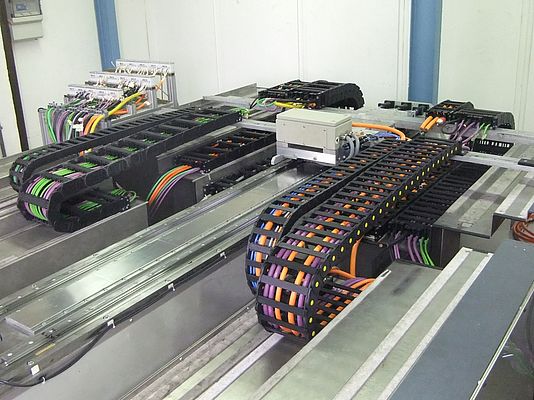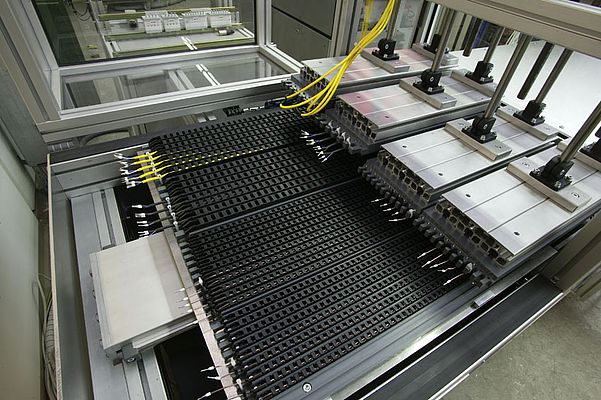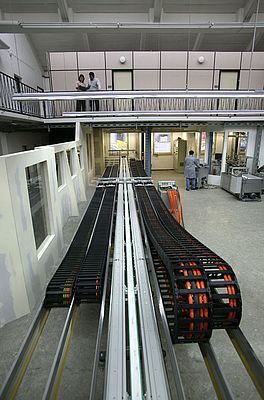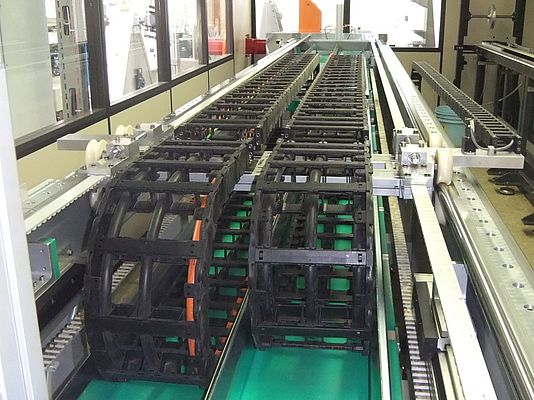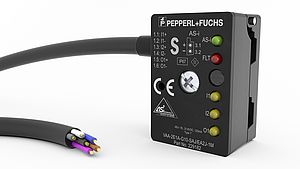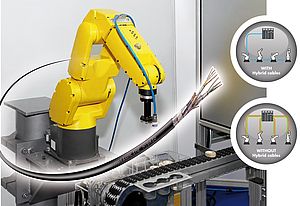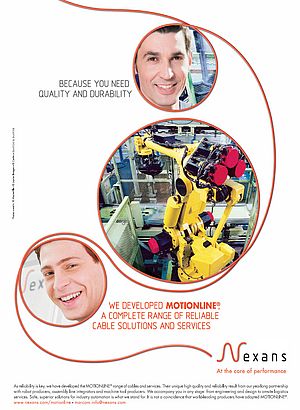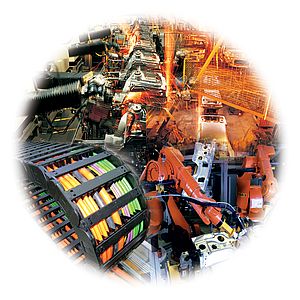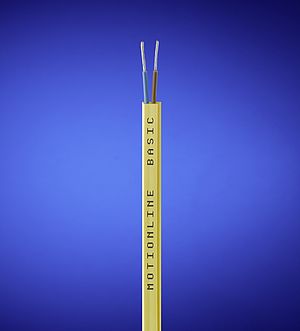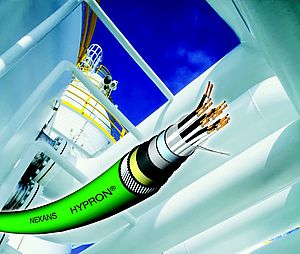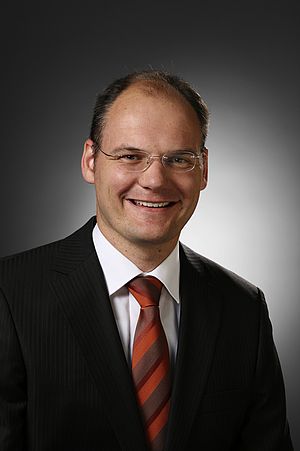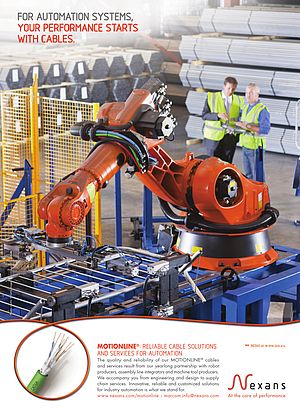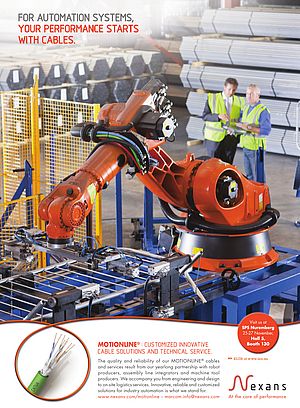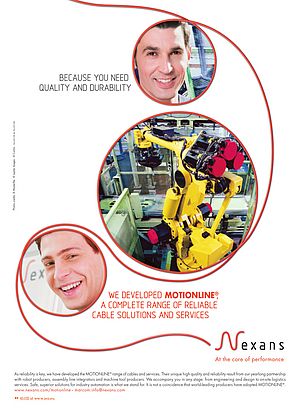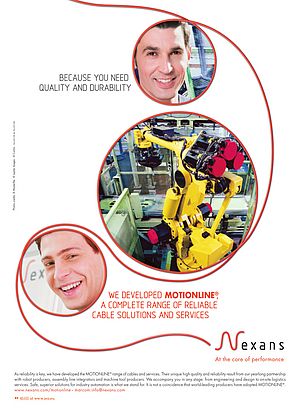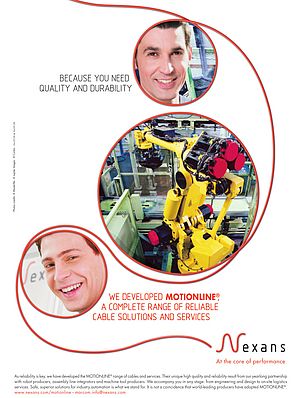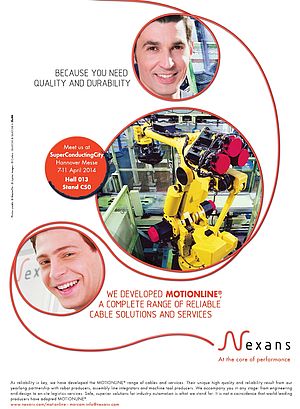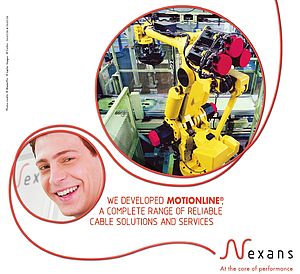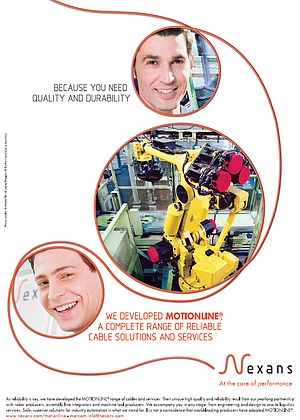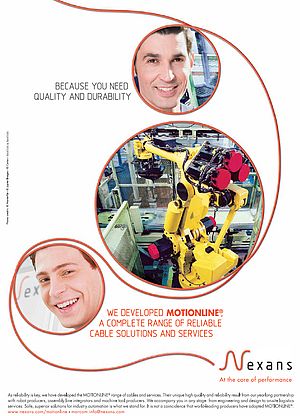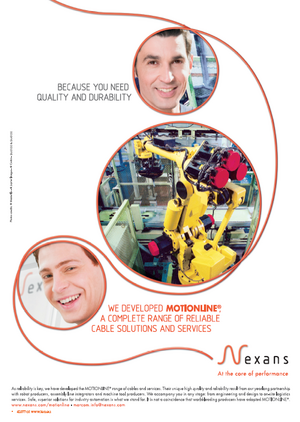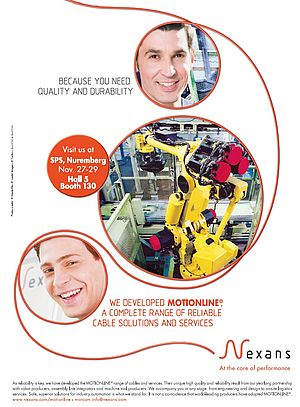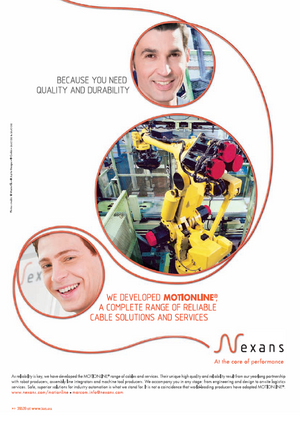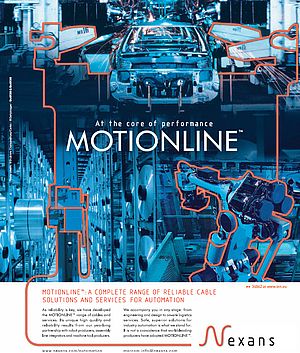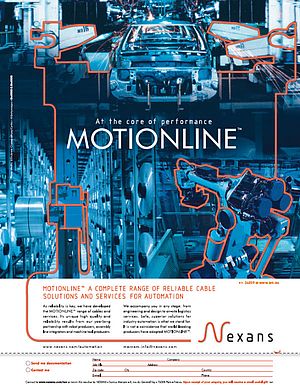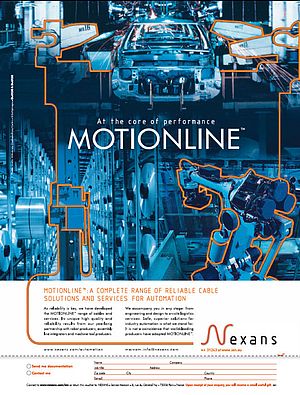With over a million industrial robots in operation worldwide, and 100,000 new units added yearly, automation is continuing to expand dramatically, especially in Asia. Machine tools are also evolving, often merging with robotics in terms of complexity and intelligence.
What has often gone unappreciated is the role cables play in increasing the mobility and sense, operational speed, networking, compactness, safety and eco-friendliness of today’s production lines. This contribution can take many forms: from reliability and survivability in tough conditions subject to vibration and movement, to the ability to carry more data to ensure precision and control at a distance.
A reliable line of cables
To meet the challenge, Nexans combined “push” through ongoing technical research with “pull” driven by genuine customer needs to create a range of MOTIONLINE cables to assure the interconnection, control and process efficiency of robots and flow lines.
Nexans frequently designs and engineers a special cable to deliver vital characteristics desired by customers. For example, in the late eighties Siemens was looking for a servomotor cable that could resist oil and mechanical stress, because PVC and other cable insulations were no longer adequate for ultra-rapid production lines.
Nexans drew on intensive insulation research to suggest the combination of thermoplastic elastomer (TPE) insulation for hardness and easy gliding with a polyurethane (PUR) jacket for oil resistance and low abrasion. Machine tool manufacturers originally hesitated because of higher costs, but the fact that the new cable lasted 10 times longer changed the logics of investment through a much lower cost of ownership.
Later, Nexans continued to expand its MOTIONLINE cables to include a full range of power, encoder, control, bus and sensor cables to help keep its customers competitive.
The multi-strand miniature control cables allow for more compact robots with a longer life, while bus cables are gradually replacing encoder cables, the “brain” of every machine tool. In fact, there is a definite trend from basic bus applications towards enhanced solutions and eventually whole net-based control solutions.
Originally, ASI-bus cables provided signal transmission for basic control, beyond servomotor functions. Then came Nexans Profibus cables for complex control delivering up to 12 Mbits/s. Co-developed with Siemens it became a leading standard in Europe and is still widely used in the automotive industry. Finally, Profinet cables now deliver Industrial Ethernet (100 Mbps) to seamlessly merge the front/back office with the factory floor.
Nexans Drive-CLiQ Industrial Ethernet cables are the latest development for servo-drives and motors. Using standard RJ-45 connectors they allow drive systems to be connected directly to motors, and can run up to 100 meters without repeaters.
Design and testing
By the late nineties, Nexans was busy standardizing its cables according to basic criteria which take into account design, materials and approvals (i.e. standards).The elements of chain cable were rigorously assessed, including conductor type, insulation properties, twisting characteristics, and fire performance, etc.
This allowed the company to draw up definitions and categories for the dynamic requirements of chain cables which resulted in a guideline for chain cable applications. SFK categories start with SFK 1 for small movements with big radius cables up to SFK 6 for fast movements. The cable manufacturer is currently working on SFK 7 standard chain cables which will handle acceleration of up to 30 meters per second, and accommodate velocities of 300 meters per minute for up to 10 million bends.
Important breakthroughs
In recent years, conscious of the need to meet various national standards in the most cost-efficient way – especially with regard to jacket material – where possible, the company decided to build one type of cable which could fulfill all requirements instead of two cables with different materials.
For example, Nexans fire-performance cables meet the Halogen-Free Flame (or Fire)-Retardant (HFFR) standards prevalent in Europe, while at the same time fully complying with American flame-retardant standards. The higher cost of HFFR materials is partly recovered from lower inventory costs and larger production lots.
Another important success story started in 1999. The cable specialist developed its own TPM (Thermo Plastic Modified) insulation material. TPM is a polypropylene-based material which is extruded in a double layer in one process. The inner sheath provides excellent electrical properties, while the outer sheath has very good mechanical characteristics.
This co-extrusion process creates two advantages for customers: either lower cost by reducing the wall thickness of the insulation, or lower capacitance by using the usual wall thickness (which means that longer cable lengths can be used with fewer filters required in the cabinet).
Because one weak link can interrupt the production chain and delay the delivery of a product, resulting in financial loss, Nexans continues to draw on many years of research and development and thousands of tests to develop its MOTIONLINE family of cables which offer both safety and reliability to the automation industry.


